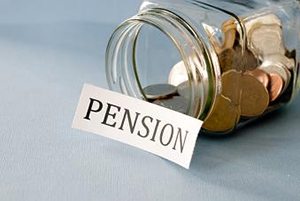Retirement savers can boost their finances by taking advantage of a tax twist written into the government’s new pension rules.
The top up method applies to couples over 55 years old with one partner still working after April 2015.
All they have to do is claim pension contribution relief by using their pensions as a revolving investment.
Under the rules that come in to force from April 2015, the wife injects £2,880 into her pension after April 6, when the new tax year starts.
As a basic rate taxpayer, HM Revenue & Customs (HMRC) tops up her contribution by £720 to £3,600.
The pension rules will let her take that money out straight away.
How revolving pensions work
If she is not working, she pays no tax and if she is working and the £3,600 is less than 25% of her pension fund, she still pays no tax.
Then she gives the £3,600 to her husband. He pays the money into his pension, again receiving the pension contribution relief top-up.
If he is a basic rate taxpayer, he receives an extra 20% top-up, adding £900 and taking his payment up to £4,500. Should he also be a 40% taxpayer, he can claim another £900, raising his contribution to £5,400.
In total, that initial £2,880 has been boosted by £2,520 simply by shuffling the money between the two pensions.
The ploy still works if both are basic rate taxpayers or do not work at all – but they still benefit from the £720 uplift each.
Remarkably, the government will let retirement savers do this year after year, providing pension contribution limits are not breached.
Over 10 years, contributing £2,880 a year to the wife’s pension gives a fund of £45,000 without any tax-free investment growth.
Deferring the state pension
Figures suggest that at a moderate 3% compound interest, investment growth could add around another £7,500 to the pension fund, bringing the pot up to £52,500.
Then, 25% or £13,125 could be drawn tax free and the rest would be subject to tax – unless the couple waited until they no longer worked and phased down the withdrawals within their personal tax allowances.
They could make even more money if they drew down this cash and deferred their state pensions – earning more than 5% a year interest on their undrawn state pension.
Industry experts agree that under the current rules, recycling a pension in this way is perfectly legitimate, but fear the government could change the law to limit how many times money drawn from a pension can be reinvested.
Another scenario could be for the government to put a lid on pension recycling by capping the amount of cash anyone can invest during their lifetime.
